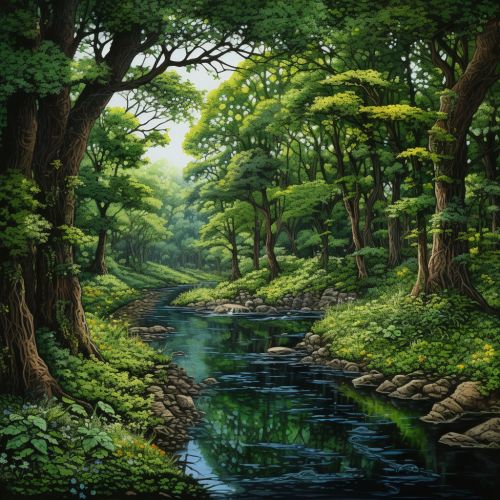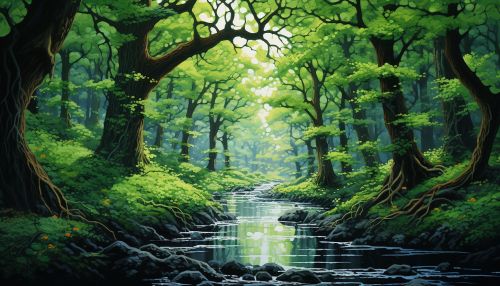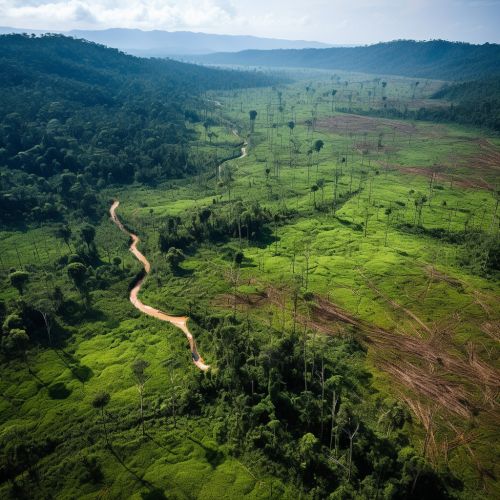Amazon Rainforest
Introduction
The Amazon Rainforest, also known as Amazonia, is one of the world's greatest natural resources. As the world's largest tropical rainforest, it covers an area larger than the continental United States and is home to an estimated half of the world's species. The Amazon Rainforest is a complex ecosystem that provides a critical habitat for a vast array of plant and animal species, many of which are not found anywhere else on Earth.


Geography
The Amazon Rainforest spans nine countries in South America: Brazil, Peru, Colombia, Venezuela, Ecuador, Bolivia, Guyana, Suriname, and French Guiana. The majority of the forest is contained within Brazil, with 60% of the rainforest, followed by Peru with 13%, and with minor amounts in the other countries.
The Amazon Rainforest is centered around the Amazon River, the world's second-longest river. The Amazon River begins in the Andes Mountains and flows eastward into the Atlantic Ocean. Along its route, the river is fed by over 1,100 tributaries, 17 of which are over 1,000 miles long.
Biodiversity
The Amazon Rainforest is renowned for its biodiversity. It is estimated to be home to over 400 billion individual trees representing 16,000 species, 2.5 million insect species, over 40,000 plant species, 2,200 fish species, 1,294 birds, 427 mammals, 428 amphibians, and 378 reptiles. Many of the species found in the Amazon Rainforest are endemic, meaning they are not found anywhere else in the world.
Climate
The Amazon Rainforest has a tropical rainforest climate that is typically hot, humid, and wet. The average temperature in the Amazon Rainforest is 27°C (80.6°F), with little temperature variation between seasons. The rainforest receives between 1,500 and 3,000 mm of rainfall annually.
Ecosystem
The Amazon Rainforest plays a crucial role in the Earth's ecosystem. It is often referred to as the "lungs of the Earth" because it produces approximately 20% of the world's oxygen through photosynthesis. The rainforest also plays a vital role in regulating the planet's carbon cycle and climate.
Deforestation
Deforestation is a major threat to the Amazon Rainforest. Large areas of the forest are being cut down for logging, mining, and agricultural purposes, particularly for cattle ranching and soy production. Deforestation in the Amazon not only threatens biodiversity and disrupts the ecosystem but also contributes to global climate change by releasing large amounts of carbon dioxide into the atmosphere.


Conservation Efforts
Various conservation efforts are underway to protect the Amazon Rainforest. These efforts include the establishment of protected areas and parks, sustainable forestry practices, and initiatives to promote sustainable livelihoods for local communities. International cooperation and funding are also crucial to these conservation efforts.
